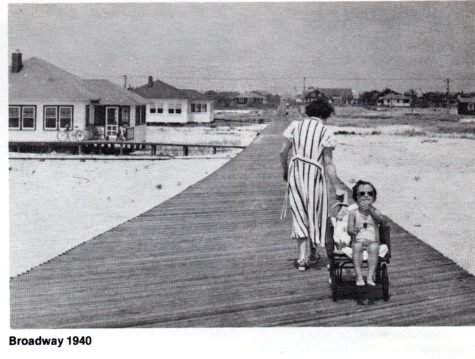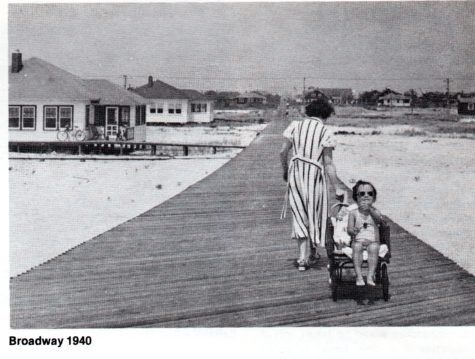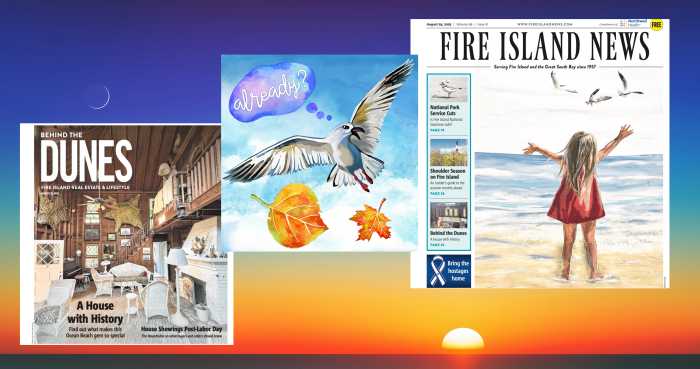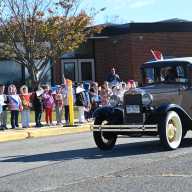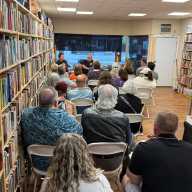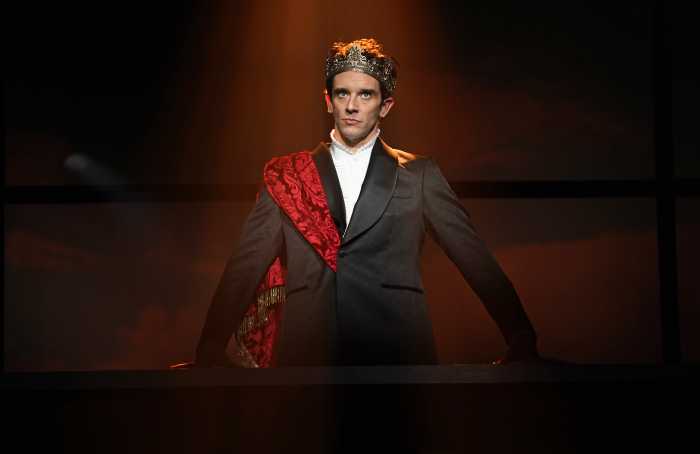SALTAIRE SUMMERY
by Hugh O’Brien
WELCOME TO SALTAIRE! Our community is the westernmost but one (Kismet) on Fire Island, about a mile and a half from the Lighthouse. Running east to west, it occupies the second longest stretch of beach on the island (exceeded only by Fire Island Pines) but the widest portion, nearly half a mile from bay to ocean. Yet despite its physical size, Saltaire has fewer homes than many smaller communities: around 430 or so (no one seems inclined to count them too closely), against 600 or more in some other hamlets. This gives Saltaire more open space, and less dense construction, than most other communities on Fire Island. It’s this feel and fact of being a roomier, more spacious area that has attracted so many people to the village, a great many of whom began their Fire Island experience elsewhere before settling in Saltaire. And because the village has no stores, restaurants, bars or other commercial enterprises (save for a single market and a private Yacht Club), it’s gained the reputation of being a “family community” – a reputation its founders consciously planned and cultivated over a century ago, and one that’s been passed down intact ever since.A Brief History:Saltaire’s origins can be dated according to one’s preference: 1910, the land was purchased and plotted; 1911, construction began; 1912, the first residents moved in; 1917, it became the first (of only two) incorporated villages on the island. Early on, Saltaire’s founders provided for amenities geared to family life: a recreation field and program, a market, our own ferry, churches, a volunteer fire department (though the present organization dates from 1969), water services and so on. Incorporation as a self-governing entity was designed to give village residents the power to preserve and expand these basic amenities while keeping Saltaire the family-oriented community its founders envisioned. Although in its early years this included some unfortunate but then common practices such as “restrictions,” it also allowed the village to control development, avoid unwanted commercial intrusions and maintain a family-friendly atmosphere. This approach (happily, without restrictions) remains the underlying principle of Saltaire life today.Progress came slowly to Saltaire. Electricity arrived in 1937, and private telephones not until 1949. (Party lines, a popular mid-century form of community entertainment, lasted until 1965.) Over the years some aspects of early village life have gone by the wayside: the Western Union telegraph office, once the sole means of communication with the outside; the water tower, a landmark of the skyline from 1916 to 1968; the Casino where Brodkin Park sits today. The defining event inSaltaire history occurred on Sept. 21, 1938, when the island was struck by the infamous hurricane of that year. Across all Fire Island, Saltaire was hit hardest; two women were killed, more than two-thirds of the houses destroyed, and an entire east-west street, Ocean Promenade, together with the land it stood upon, was swept into the Atlantic, never to be recovered. A mark of how much was lost may be seen at the village maintenance yard, once a block and a half from the ocean, now just behind the dunes. Yet slowly the village recovered from this disaster, and by the late 1950s a few new homes started to be built, though it would not be until the 1970s that the number of houses equaled the pre-1938 total. Hurricane Sandy devastated the community almost as badly as had the storm of ’38, but as before, out of this destruction came a better village, with a new market, new Yacht Club, brand-new walks and an improved field, among other amenities in the still-ongoing work of recovery.What Saltaire Means to Me.This correspondent has been a resident of Saltaire since 1959. My family traces its beginnings on Fire Island to 1909, but like many others we eventually found that Saltaire was the place we liked best. One of the things first-time visitors to Fire Island comment on is how completely different each town is from any other: ours are not cookie-cutter communities. This gives everyone great leeway to choose the place they feel most at home in, and for me and many others, that’s Saltaire. It’s quiet, green and spacious, much prettier than it was in the old photos, and I appreciate the absence of a loud, busy commercial district. Our lives revolve around the Yacht Club (tennis, sailing, dinners, etc.), our natural amenities (bay and beach), softball, soccer, swimming and other sports, and just hanging out with friends. Some of us choose to help the community through public service, on the Village Board of Trustees or other Village bodies, or through the Saltaire Volunteer Fire Company, the Saltaire Citizens’ Advisory Association, the Yacht Club or other venues.Saltaire is more than a village; it’s truly a community, a gathering of neighbors who work together for the good of the place. Certainly there are disagreements and conflicts; this is a village, after all, not a monastery. But what we value most is the tranquility Saltaire offers, the more leisurely pace and respite from the “real world.” This is what we look forward to experiencing each weekend during the summer, and long for in those gray winter months, incarcerated across the bay in what those few blessed to call Saltaire their year-round home refer to, without envy, as “America.” It’s a pretty nice place.